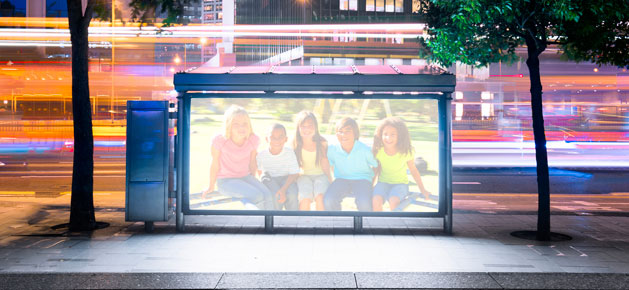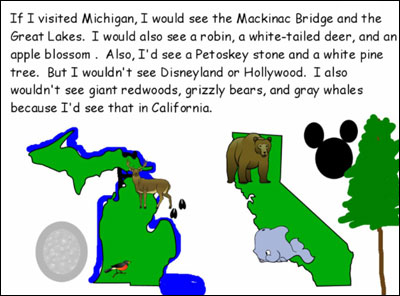Source: http://creativeeducator.tech4learning.com
Combining the 3 R’s and the 4 C’s

The pace of change in our world is accelerating and designing classroom instruction with a 20th-century mindset no longer prepares students for future success. While not everyone agrees on a single solution, sitting in rows and listening to content delivered through a lecture is slowly being replaced with active learning environments where students are prompted to ask questions, seek out relevant information, and apply information, not just remember it.
“The illiterate of the 21st century will not be those who cannot read and write, but those who cannot learn, unlearn, and relearn.” --Alvin Toffler
In 2002, the Partnership for 21st Century Skills (P21) began looking at the skills students need to be successful citizens beyond school. After interviewing leaders in a range of fields and working with schools to implement the P21 framework, they identified a set of four essential skills they call the 4 C’s: critical thinking, creativity, collaboration and communication.
The rest of this article describes steps you can take to reinforce the 4 C’s in your classroom and provides ideas you can use to change instruction to make the 4 C’s an integral part of the learning process.
Critical Thinking
The often-cited, but nevertheless accurate, reality is that today’s wealth of information makes it essential that every student must be able to compare and evaluate facts and opinions and make decisions based on that analysis. We need citizens who know more than “about” something, we need citizens who can take information and apply it to solve problems and create solutions.
Developing student’s thinking skills is not a revolutionary concept. Benjamin Bloom and colleagues first published his eponymous Bloom’s Taxonomy, the ubiquitous methodology for classifying educational learning objectives, in 1956! You’re likely also familiar with Webb’s Depth of Knowledge, which was released back almost 30 years ago and the revised Bloom’s Taxonomy from 2001. No matter which system you use, educational models like these can help you plan instruction that promotes higher levels of thinking.
Today’s presentation tools make it easy for students to generate flashy presentations. Student’s can simply mine data during a brief web search and copy and paste it into a presentation with lots of animation and movement. We can be so enamored by design and production value that we overlook the fact that the content was simply a dump of facts and information and shows no evidence of thought and understanding.
It is easy — and essential — to move beyond “about” projects; simply ask students to demonstrate knowledge AND thinking with end products that require both. Educator Elizabeth Allen has a list of fun products students can create that push them beyond copying and pasting, requiring them to think, internalize, and contextualize.

We need to create classroom cultures that value questions more than answers. If we want students to analyze, evaluate, and work with challenging ideas and problems, we need to equip them with skills for categorizing, deconstructing big ideas into component parts, identifying relationships, and asking more questions. Great thinking starts with effective inquiry.
Creativity
The US Patent office evaluates new ideas using the criteria of 1) originality, 2) usefulness, and 3) novelty. This sort of innovation is a result of creativity in practice. If we are going to be able to address the needs and issues in our highly complex and rapidly changing world, we need to stop thinking about creativity as just art, or as a unique character trait.
To promote creativity in our students, we need to create a learning culture that values and promotes creative behaviors. One of the biggest predictors of person’s creative capacity is their openness to experience. Ensuring that the classroom culture values risk-taking and difference can help students overcome their reluctance to try new things, especially those things at which they might not initially excel. Make it clear that creativity is a positive, valued attribute of EVERY student. “Expect that your students can do it.”
To promote student creativity, require students to create work that is uniquely theirs. This sounds easy, but making it happen requires you to change as well. Let go of giving students exact instructions that, when followed, are guaranteed to meet your expectation of success. Let students take control of project design; let them define what, where, when, and how during ongoing discussions about why.
Student work, whether done individually or in teams, should not look like work done by other students on the same topic. Sameness is a symptom…when the processes and the resulting product(s) all look the same, there is too little control in students’ hands and too many instructions being followed. Create an environment where student creativity can flourish by transferring responsibility for learning and demonstrations of that learning to students.
Collaboraton
Students often dislike working in groups because they do not know how to collaborate productively. Take the time to develop norms for group work and discuss behaviors and actions that result in successful team projects.
Learning to build on one another's knowledge and expertise involves respect, listening, and contributing. You might scaffold the learning process by assigning roles, allowing students to see the different tasks needed to complete a project and understand how their strengths can contribute to the overall success of their group. Make sure students have time and opportunities to reflect on their own strengths and weakness, as well as how to utilize the strengths of their team members for maximum effect.
While building skills for successful teamwork is important, it is just the beginning of collaboration in a 21st century classroom. If we want to prepare students for high-level thinking and work, we need to give them access to real work with experts and colleagues in a field of study. They need to work alongside professionals on tasks for a real audience who values that work.
Communication
Including communication as one of the 4 C’s underscores the changing nature of literacy. Powerful literacy skills have always included the ability to read and to share thoughts, questions, ideas, and solutions in ways others can understand. Literacy includes traditional speaking and writing as well as well as new modes of communication made possible by widespread, affordable availability of video and multimedia tools.
Regardless of the medium, students must still be capable of clear, concise writing and the correct use of topic-specific vocabulary. Today’s students must also build skills with multimedia forms of communication, requiring the ability to “show rather than tell” using pictures, music, intonation, and more.
Technology has changed how we communicate. PEW Research Center findingssuggest that students prefer writing on the computer to writing on paper and that they will write and edit more when writing on a device rather than writing by hand.
If we want students to work hard, we need to give them audiences for their work that value the content and delivery for more than academic purposes. Technology makes it easy to connect students to the world around them, providing an authentic audience for their communication. The Web makes it easy to connect to a specific audience, allowing students to share an idea or solution that make a real difference in the lives of real people.
21st Century Skills and the Classroom
A 21st century classroom provides students with the dispositions and skills to meet both the 3 R’s and the 4 C’s. Don’t worry…this isn’t yet another requirement you’ll need another teacher to cover.. To help students gain these essential 21st century skills, you can adapt the process of learning, not the content they learn. By adding in both maker movement ideals and elements of project-based learning, you can provide learning opportunities that require students to learn and apply these skills.
Get Making!
Students want to be producers, not consumers. If you have the budget and the space, you could create a Maker Space in your classroom where students can use paper and other recycled materials to build prototypes of their ideas as well as products that solve real problems.
If you don’t, you can take advantage of technology tools that start with a blank page and let students develop their own curriculum products that show their knowledge and passion. Open-ended tools like Frames and Wixie require students to think creatively as they develop, implement, and effectively communicate new ideas to others.
Having students create with video, audio, text, and images provides an opportunity to exercise higher-order thinking skills. Students must critically evaluate both content and media as they frame, analyze, and synthesize information to solve problems and answer questions.
Implement Project-Based Learning
Project-based learning (PBL) connects students to real world issues and problems with an authentic audience. A project-based approach to teaching and learning requires students to question, think, and work together to apply learning. As they apply knowledge, explore relationships between ideas, and develop solutions, they engage deeply with and make personal connections to the curriculum.
“Creating authentic learning tasks... prompts this important process of meaning-making, because they establish relevance; the question, ‘why is this important to me?’ does not go unanswered.” — Virginia Padilla Vigil
This type of project work requires students to employ flexibility and adaptability as they reevaluate their work throughout the project process, becoming self-directed learners as they produce quality results. Working in diverse teams to complete a project on time and meeting assessment requirements helps to build leadership, responsibility, social skills, collaboration skills, and cultural awareness.
Get started
Whether you start with small steps for each of the 4 C’s or tackle a large instructional shift to move toward a 21st century classroom, the important thing is to embrace the goal of provide students with the content and skills they need to succeed in our complex and changing world.
Further Reading
Jonassen, D. H., & Reeves, T. C. (1996). Learning with technology: Using computers as cognitive tools. In D. H. Jonassen (Ed.), Handbook of research for educational communications and technology (pp. 693-719). New York: Macmillan.
Lehrer, R. (1993). Authors of knowledge: Patterns of hypermedia design. In S. P. Lajoie & S. J. Derry (Eds.), Computers as Cognitive Tools (pp. 197-227). Hillsdale, NJ: Lawrence Erlbaum.
Virginia Padilla Vigil, Ph.D. Encouraging Rigor and Excellence in the Classroom.
